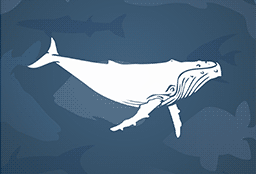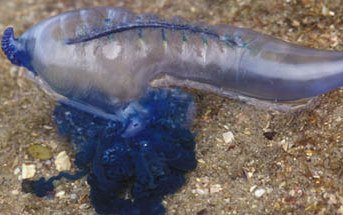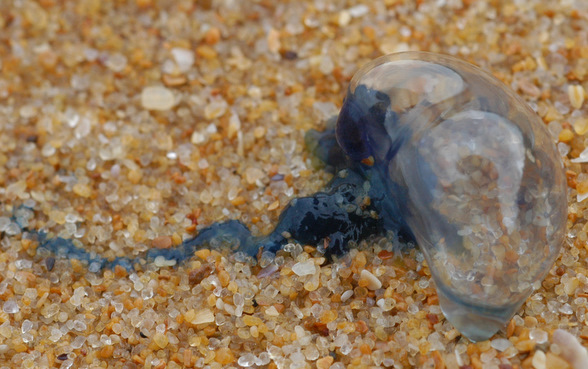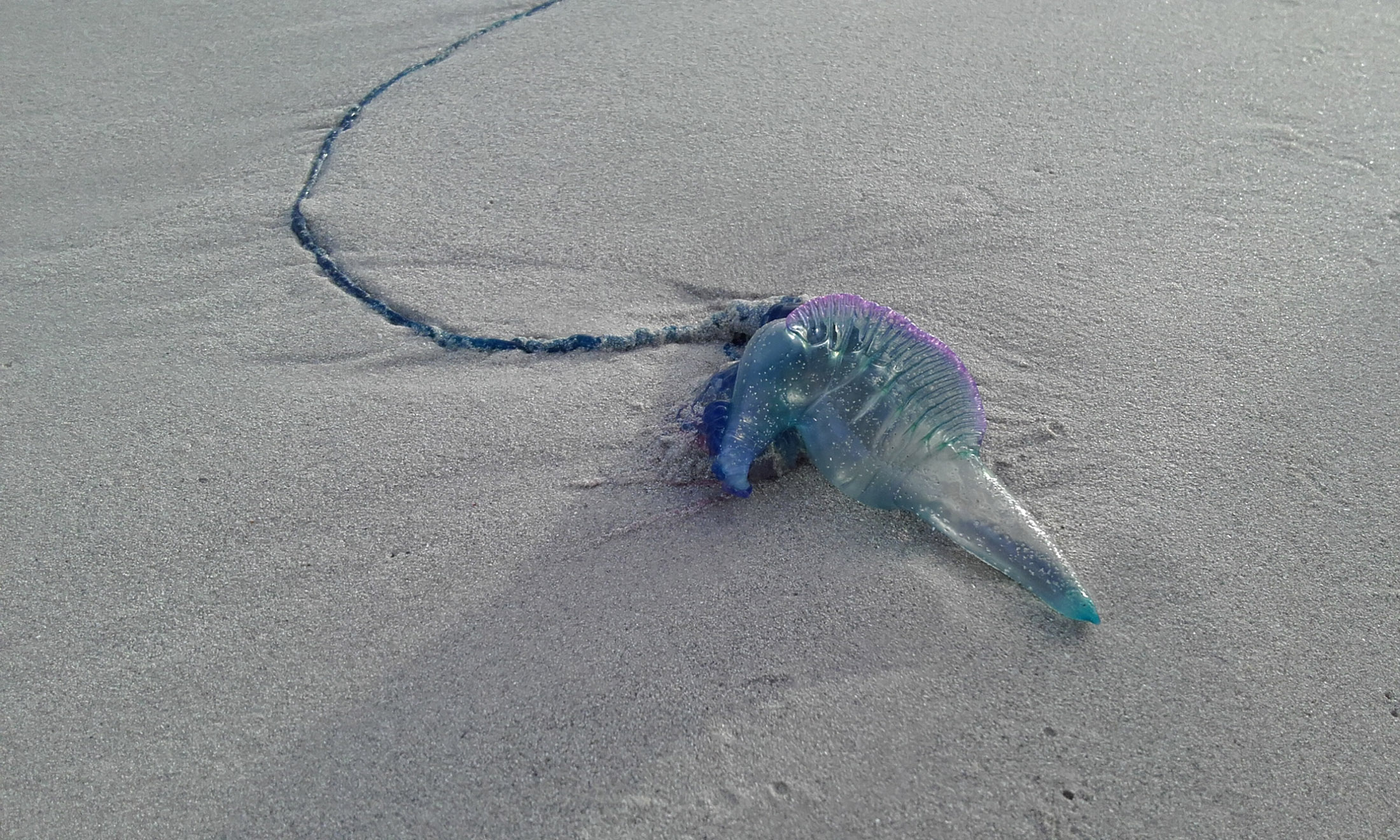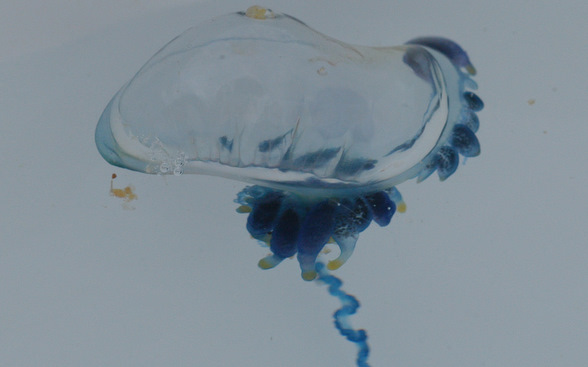Behaviour
Diet
Small fish, crustaceans, plankton and other small marine animals. Special tentacles catch and paralyse its prey, before other tentacles digest the food.
Movement
Its float acts as a sail so it is blown along by the wind. Some floats lean to the left and some to the right, so the same wind will push individuals in opposite directions, preventing all of them being washed up on the shore to die, even if the wind blows some toward the coast.
Breeding
Special tentacles contain both male and female parts. The eggs are fertilised, grow into larvae, and eventually develop into adults.
Field Guide
Improve your identification skills. Download your Blue Bottle guide here!

